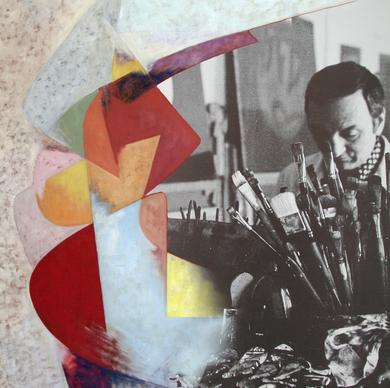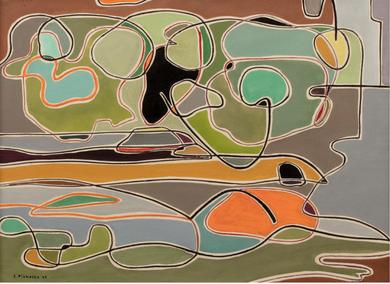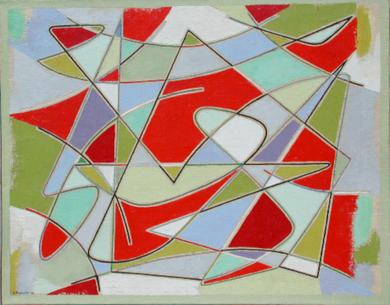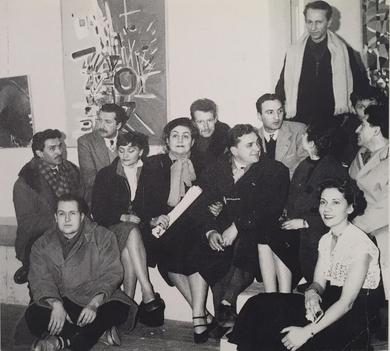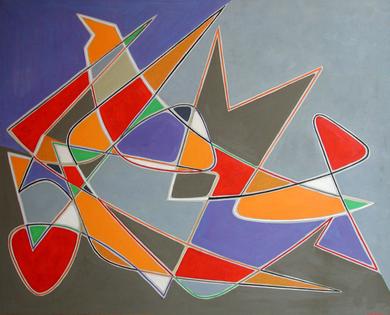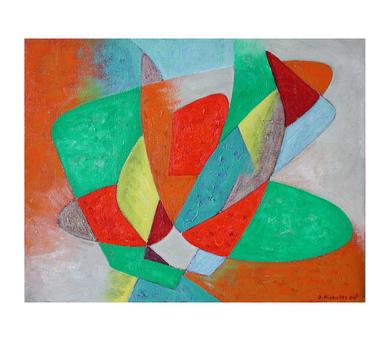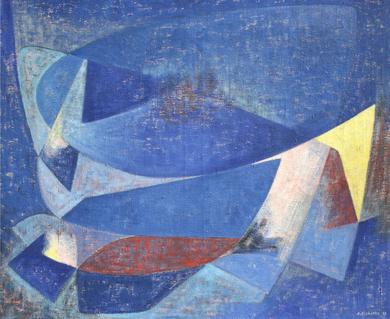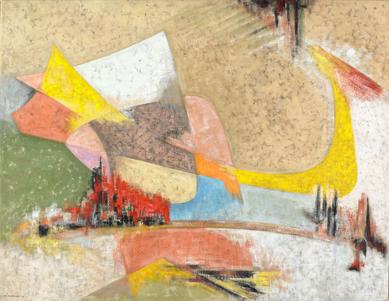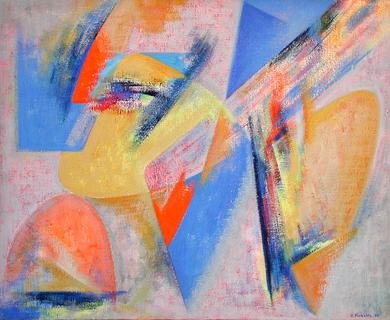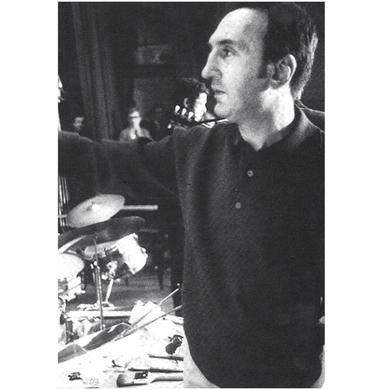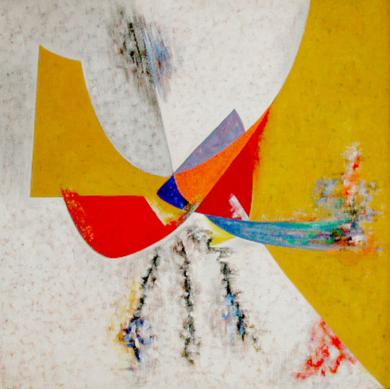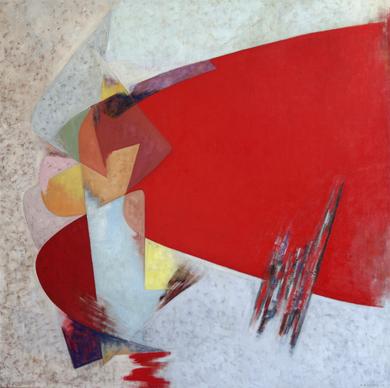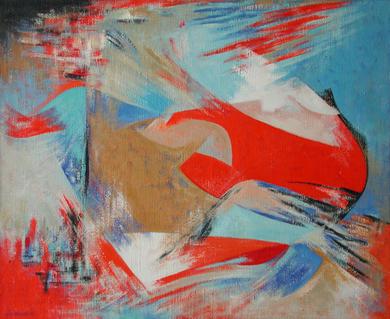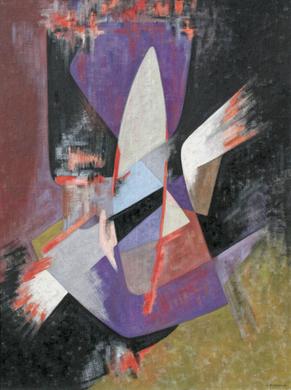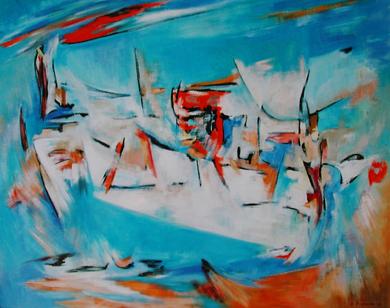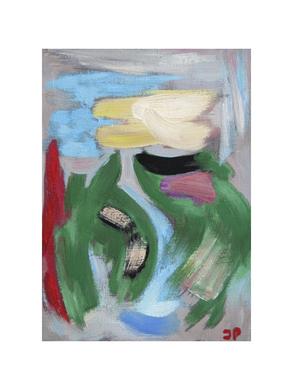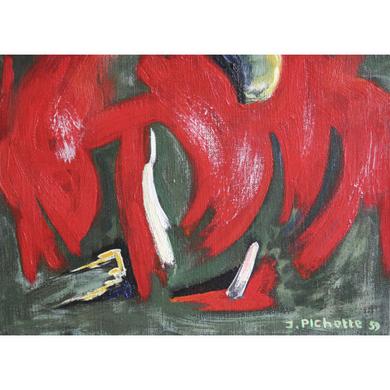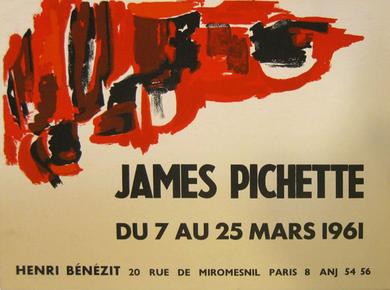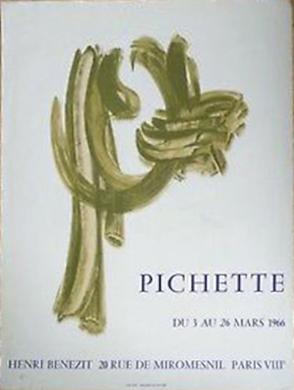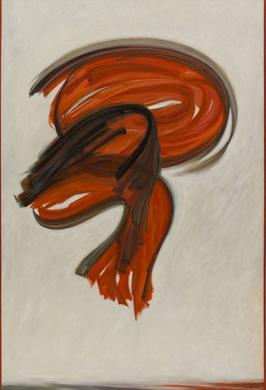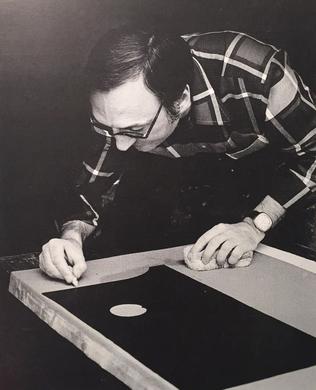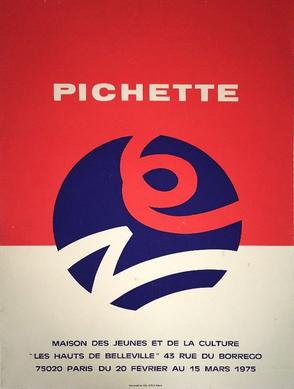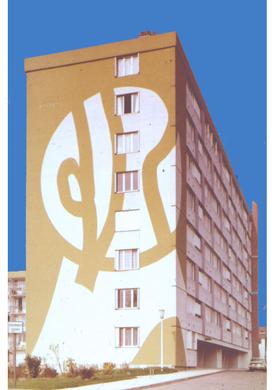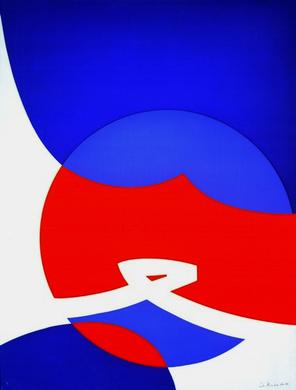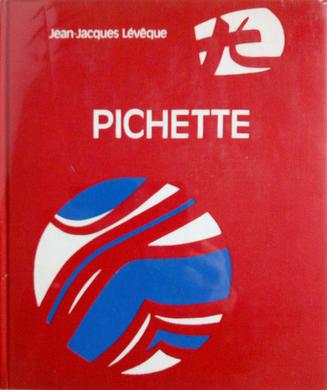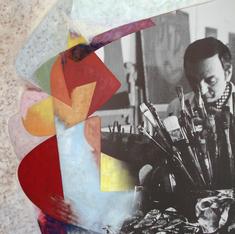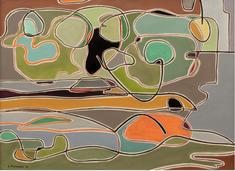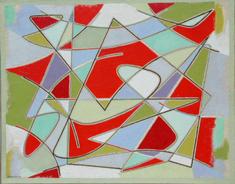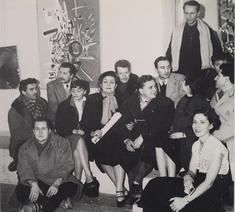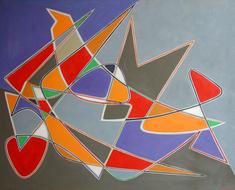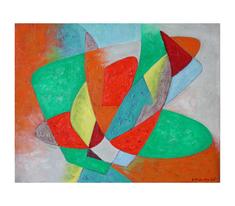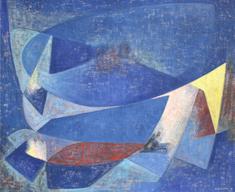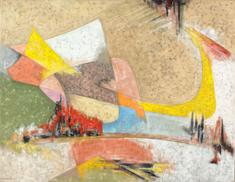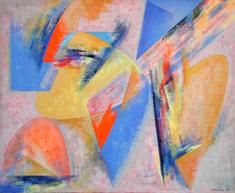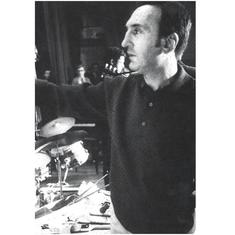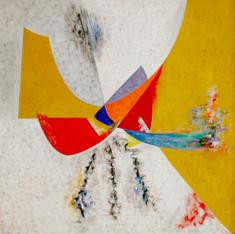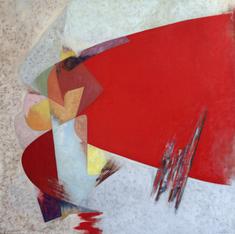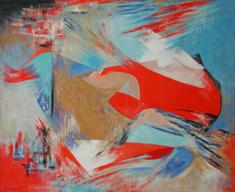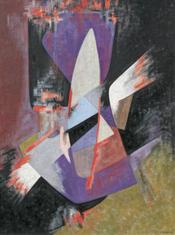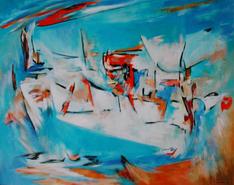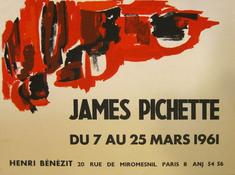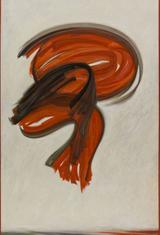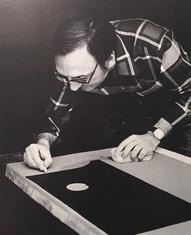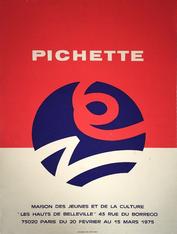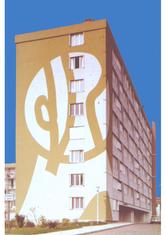James Pichette was a prominent member of the influential Abstraction Lyrique group in Paris during the 1950's, and drew much inspiration from jazz music famously holding public performances painting with the accompaniment of live jazz bands. The abstract rhythmic compositions of jazz music generated a vivacity which Pichette sought to emulate and even surpass in his paintings, to achieve a euphoric sensorial experience.
Having initially studied in Marseille, Pichette had begun designing sets and costumes for his brother Henri Pichette’s theatre productions, at which he displayed a noticeable flair for original and innovative creativity. With the outbreak of the war in 1939, he enlisted with a cavalry regiment and was awarded the Croix de Guerre, but was hospitalised for two years. He used this time to read extensively, choosing philosophical authors such as Gide, Léon Bloy, and Huysmans. On his release in 1943, he joined the underground resistance movement, and helped liberate Chateauroux. He would later become an activist against political atrocities such as the Vietnam War, the Soviet occupation of Prague, and the Chilean dictatorship.
After the war Pichette settled in Paris, and his work at this time was semi-figurative with a surrealist element, but over the next few years his work became significantly more abstract, and he held his first exhibition of pure abstract paintings in 1949 at Galerie Paul Morihien. The following year he participated in the Salon des Réalités Nouvelles, where he showed several large canvases which had affinities with the work of Magnelli. Pichette then joined the faction of young avant-garde artists being promoted by Charles Estienne, and together they held an important exhibition titled Peintres de la Nouvelle École de Paris at the Galerie Babylone, in which Pichette participated alongside other insurgent artists such as Atlan, Dmitrienko, and Nejad. In 1953 they controversially founded the Salon d’Octobre in opposition to the Salon de Mai, which as the established venue for avant-garde artists was, they declared, becoming too institutionalised.
Throughout the fifties and sixties Pichette exhibited extensively in Europe and abroad, constantly developing and refining his form of lyrical abstract expression. In Paris he showed mainly at Galerie Henri Bénézit, 1956, 1957, 1966, 1969, 1973; elsewhere notably, Boston, 1953; Brussels, 1953; Tokyo, 1957; Milan, 1958; Musée de l’Athénée, Geneva, 1961; Museo Nacional, Mexico, 1962; New Orleans, 1962; Academie des Beaux Arts, Istanbul, 1964; Musée d'Art Moderne, Paris, 1965, 1970, 1984; Milan, 1972; UNESCO, Paris, 1975; Centre Pompidou, 1977. In 1973 he was given a retrospective at Galerie Septentrion, and a second in 1974 at Galerie L’Art de la Paix. Pichette also collaborated on several urban projects merging art and architecture. He was championed throughout his career by Jacques Villon and Michel Ragon and achieved international critical acclaim. The artist is now represented in numerous major public collections.

